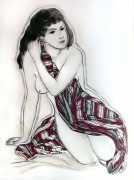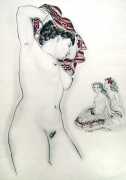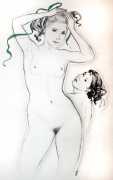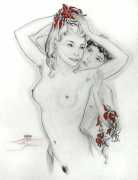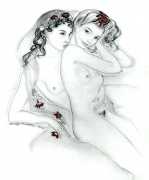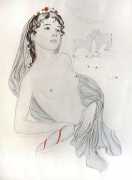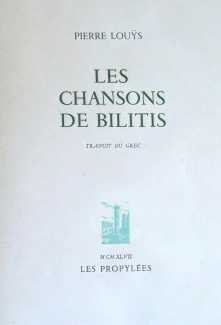 Pierre Louÿs’ Les chansons de Bilitis (The Songs of Bilitis) is a collection of erotic lesbian poetry first published in Paris in 1894, and one of the most successful literary frauds of all time; most of Louÿs’ early readers honestly believed that they were reading genuine translations of rediscovered ancient poetry found on the walls of a tomb in Cyprus, written by a woman called Bilitis who was a courtesan and contemporary of Sappho.
Pierre Louÿs’ Les chansons de Bilitis (The Songs of Bilitis) is a collection of erotic lesbian poetry first published in Paris in 1894, and one of the most successful literary frauds of all time; most of Louÿs’ early readers honestly believed that they were reading genuine translations of rediscovered ancient poetry found on the walls of a tomb in Cyprus, written by a woman called Bilitis who was a courtesan and contemporary of Sappho.
In the 143 poems Bilitis shares her most intimate thoughts, from childhood innocence in Pamphylia to the loneliness and chagrin of her later years. To lend authenticity to the forgery, Louÿs listed some poems as ‘untranslated’; he even craftily fabricated an entire section of his book called ‘The Life of Bilitis’, crediting a fictional German archaeologist as the discoverer of Bilitis’ tomb. Though Louÿs displayed great knowledge of ancient Greek culture, ranging from children’s games to the application of scents, the literary fraud was eventually exposed. This did little to taint its literary value, and Louÿs’ open and sympathetic celebration of lesbian sexuality earned him both popularity and historic significance. Although for the most part Les chansons de Bilitis is original work, many of the poems were reworked epigrams from the Palatine Anthology, and Louÿs even borrowed some verses from Sappho herself. The poems are a blend of mellow sensuality and polished style in the manner of the Parnassian school, but underneath run subtle French undertones that Louÿs could never escape.
Several illustrated editions of Bilitis appeared in the 1940s, the best known those of Suzanne Ballivet and Paul-Émile Bécat in 1943, followed by this Minache-illustrated edition four years later. Génia Minache’s soft drawings have something of the quality of the work of Mariette Lydis, whose work she would have been familiar with.
Les chansons de Bilitis was published by Les Propylées, Paris, in a limited numbered edition of 330 copies. In 1950 the volume was reissued by La Bonne Compagnie, Paris, as part of a four-book boxed set of Pierre Louÿs works, which also included Les aventures du Roi Pausole, illustrated by Schem, La femme et le pantin, illustrated by Emilio Grau-Sala, and Aphrodite, illustrated by Jean Berque. The set was produced in a limited numbered edition of 1,200 copies.


